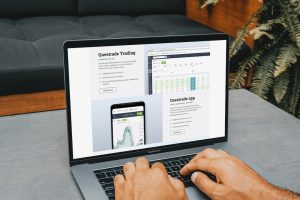Forex trading based on currency indexes has gained popularity in recent years due to its ability to provide a comprehensive view of the forex market. Currency indexes are used to measure the strength of a particular currency against a basket of other currencies. This article will explain how to trade forex based on currency indexes.
What are currency indexes?
A currency index is a measure of the strength of a currency relative to other currencies. Typically, a currency index is created by weighting the exchange rates of a currency against a basket of other currencies. For example, the US dollar index is a measure of the strength of the US dollar against a basket of six other currencies, including the euro, yen, and pound.
Currency indexes are used to provide a comprehensive view of the forex market. By looking at the strength of a currency relative to other currencies, traders can gain insights into the overall strength of the forex market. Additionally, currency indexes can be used to identify trends and potential trading opportunities.
How to trade forex based on currency indexes
Step 1: Choose a currency index
The first step in trading forex based on currency indexes is to choose a currency index to trade. Some of the most popular currency indexes include the US dollar index, the euro index, and the Japanese yen index.
Step 2: Analyze the currency index
Once you have chosen a currency index, the next step is to analyze the index to identify potential trading opportunities. This can be done by looking at the trend of the index and identifying key support and resistance levels.
For example, if the US dollar index is trending higher, this could indicate that the US dollar is strengthening relative to other currencies. Traders may look for potential buying opportunities in US dollar pairs, such as USD/JPY or USD/CAD.
Step 3: Identify potential trades
After analyzing the currency index, the next step is to identify potential trades. This can be done by looking for currency pairs that are moving in the same direction as the currency index.
For example, if the US dollar index is trending higher, traders may look for buying opportunities in USD/JPY or USD/CAD. Conversely, if the US dollar index is trending lower, traders may look for selling opportunities in these pairs.
Step 4: Use technical analysis
Once potential trades have been identified, traders can use technical analysis to confirm their trades. This can be done by looking at key support and resistance levels, as well as using technical indicators such as moving averages and oscillators.
For example, if the US dollar index is trending higher and a trader has identified a potential buying opportunity in USD/JPY, they may look for key support levels on the chart and use technical indicators such as the RSI to confirm their trade.
Step 5: Manage risk
Managing risk is an important aspect of forex trading. Traders should always use stop-loss orders to limit their potential losses. Additionally, traders should always use proper position sizing to ensure that their trades are not too large relative to their account size.
Conclusion
Forex trading based on currency indexes can provide traders with a comprehensive view of the forex market. By analyzing currency indexes, traders can identify potential trading opportunities and use technical analysis to confirm their trades. However, it is important to manage risk and use proper position sizing to ensure long-term success in forex trading.






